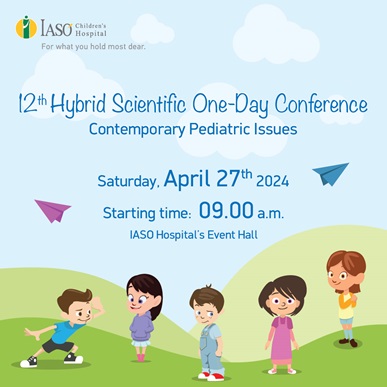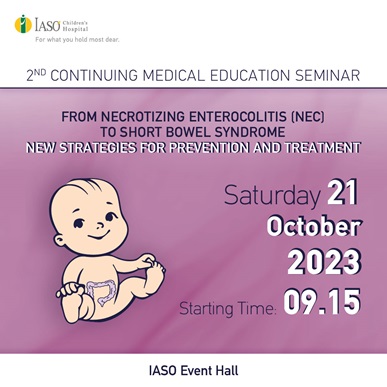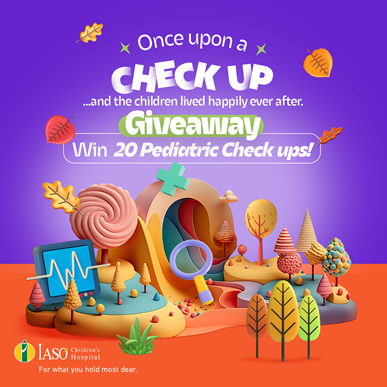
Bronchiolitis
Bronchiolitis is an infection of the lower respiratory tract, affecting children younger than 2, and is usually of a viral cause.
The virus mainly affects the small airways (tubes that deliver air to your respiratory system) which are called bronchioles. The inflammation that results from the infection causes airway obstruction (bronchioles), resulting in inadequate oxygen supply. This creates both noisy breathing (crackles and wheezing or whistling sound when the child is breathing) and respiratory difficulty (dyspnea).

Bronchiolitis diagnosis is clinical and is based on the child’s physical examination by a pediatrician, which must be performed early on. Most bronchiolitis cases occur between November and April each year, even though there are infants who develop the disease other months too, depending on the viral infection. The most common cause is the respiratory syncytial virus or RSV (from the initials of its name), as parents often hear it referred to from their pediatrician.
The virus is transmitted to the infected child through droplets from another child or adult who spoke, coughed or sneezed near the infant. An alternative way of transmission is through the hands or objects which are infected with the virus droplets (viable for hours) and come in contact with the child's mouth, nose or eyes. Note that the virus is transmitted throughout the time the patient has a fever or significant respiratory symptoms.

The infant initially develops symptoms that resemble a common cold, such as rhinorrhea or nasal congestion, minor cough, fever, and in some cases decreased appetite. Apnea (15-20 seconds of breath holding) may be one of the first symptoms, mainly in very young infants and specifically if they have a history of prematurity.
Most infants may develop deterioration of the cough after the first 48 hours, but some infants will develop more severe symptoms, such as noisy breathing (whistling or wheezing) and/or dyspnea with tachypnea (rapid breathing), affected general condition and decreased appetite or food refusal. Feeding problems are due to both nasal congestion and the infant's fatigue caused by respiratory distress.
Parents will notice the child's breathing difficulty from rapid breathing and chest retractions (the chest wall sinks in when inhaling).
One must not forget that in severe cases the infant may look strangely quiet without tachypnea due to fatigue. This condition requires emergency treatment because it may turn out to be dangerous for the child.
Who are mostly at risk?
There are groups of children who are more at risk of developing severe symptoms from bronchiolitis. Infants and premature children with a history of asthma, previous episodes of bronchiolitis, and children with heart problems, neurological problems or other chronic medical conditions are at greater risk. However, even healthy infants without known risk factors may develop severe bronchiolitis.
How can you help an infant with bronchiolitis?
The treatment of an infant with bronchiolitis at home is mostly supportive. The pediatrician will give the necessary instructions and treatment. Frequent communication between doctor and parent is necessary, so that any complication or deterioration of the child is detected early on. The infant needs continuous monitoring so as to identify signs of deterioration on time. There is no specific treatment and the commonly administered medications, such as inhaled bronchodilators and corticosteroids, as well as oral cortisone, usually do not help.
It is very important to keep the upper respiratory tract open with regular rinsing of the nose with saline, because infants are nasal breathers. When the nose is congested, they do not eat and as a result there is a risk of dehydration.
It is also important for parents to comply with the idea of small frequent meals, both for ensuring the child’s hydration and reducing the respiratory burden followed by a full stomach.
You need a pollutant-free environment (cigarette smoke and fireplace), with moderate temperature and humidity.
Infants gradually improve in the following 5-7 days with fever dropping and breathing difficulty subsiding, while coughing and noisy breathing, although improved, may last longer.
Hospitalization involves close monitoring and support for infants with serious symptoms.
When is immediate assessment needed?
- Fever in an infant < 3 months old
- Poor/affected condition
- Breathing difficulty
- Apnea
- Pallor, cyanosis
- Moaning (groaning)
- Infant fatigue
- Refusal to eat
- Acute coughing exacerbation
RSV, unfortunately, does not develop immunity following infection. This means that an infant may get infected in the same winter for a second time! Most, if not all, children have been infected by the age of 3. Avoiding overcrowding, washing hands well, avoiding exposure of the infant to cigarette smoke by quitting smoking at home and vaccinating infants over 6 months old against seasonal flu are simple and effective measures to minimize the risk of recurrent infection.
Does bronchiolitis leave a sensitivity to the child's respiratory tract for recurrent episodes or even asthma?
There’s no clear answer and it depends on many factors. The likelihood is higher in infants who have other risk factors such as prematurity, heart disease, etc. or for children with allergic predisposition (eczema, food allergy) or with parents who have asthma or even allergic rhinitis.









